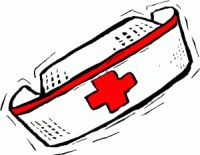HgAIC = <7%
HDL > 40mg/dl
Serum ammonia 15 to 45mcg/dl
Blood loss during menses – 40ml
Theophylline level – 10 to 20mcg/ml
Serum amylase 25 to 151
Serum lipase 10 to 140
Serum ammonia 35 to 65 mcg/dl
PCWP 8 to 13mmHg normal with RDS
Nasogastric tube suction pressure 25mmHg
Digoxin - .5 to 2.0 ng/ml
Normal aPTT – 40 SECS. (x 1.5 and 2.0 times normal, making the aPTT 60to 80 secs)
· If decreased – prone to clotting
· If increased – lower it down coz u will bleed
Digoxin 0.5 to 2.0 ng/mNormal INR – 2.0 to 3.0 ; for clients with mechanical heart valves – 3.0 to 4.5
Normal PT – 12 to 14 secs. pt time 1.5 to 2.5 times the normal
Serum albumin – 3.4 to 5g/dl
Normal serum osmolality 285 to 295mosm/kg
Normal ICP 0 to 10mmhg
Magnesium – 1-6 to 2-6 mg/dl
Magnesium : 4 to 8mg/dl
PTT 1.5 to 2.5 x control
Fasting blood sugar – 70 to 110mg/dl
Serum lipase – 20 to 180 iu/l
Urine gravity 1.018 to 1.024
Total cholesterol level – less than 200mg/dl
Triglycerides <250mg/dl
Goal BP in diabetic pt – 130/80
FBS 80-120mg/dl
Phosphate 2.5 – 4.5
1L D5W = 170 calories
RBC 4-6 mm3
Normal lifespan of RBC 80-120 days
WBC: 5,000-10,000/mm3
Folic Acid- 1.8-9ng/ml
Vitamin B12: 200-900pg/ml
Completely soaked sanitary napkin = 50ml
Neutrophil (ans) 1,500 & up normal
<1,000 moderate risk for infection
<500 high risk for infection
<100 and less life threatening
= inc infection <ANC
neutrophil 2,00/mm3
normal PR interval: .12-.20 secs.
normal QRS : .08 -.10 secs.
normal P wave : .11secs.
adult CPR : depressed sternum : 1.5 to 2 inches
compression 15:2
ESR .5 – 1.5%
Calories of TPN: 3,000-4,000 cal/day
1L = insensible loss (add usually output)
pressure of suction – 80-120mmhg (adult)
alcohol metabolism = 20mg/dl/hr
protime 12 to 20 secs
Magnesium level therapeutic 4.8 – 9.6 mg/dl
Admin of potassium: 5-10 mEq/hr not to exceed 20 meq/hr
CVP – 3 to 8 cm water pressure
Vancomycin therapeutic level: 10-25meg/ml
1 gm = 1 ml
Cerebral perfusion pressure : 70-100
Dilantin level: 10-20m3g/ml
Normal ICP : 10-20
Parkland formula: 4ml x Wt in Kg x % of body surface burned(amount of fluid to be given in 24 hrs)
Normal pulmonary arterial wedge pressure: 4-12mmhg
If inc: hypervolemia
If dec: hypovolemia
INR>6 < spontaneous bleeding
Normal INR : 2.0 to 3.0
ICP – 0-15mmhg if >20mmhg considered to be increased
NORMAL CVP 8 cm of h2O
Suction pressure 80-120mmhg
Calcium: 9.3-10.9 mg/dl
Chloride:9.5 to 10.5meq/l
Mg: 1.5 – 2.5 mEq/l
Phosphorus: 2.5 – 4.5 meq/L
Creatinine: .6-1.35 mg/dl
<2 in older calients
Phenylalanine - <2mg/dl
LDH:100-190 u/l
CPK: 21-232 ul
Alkaline phosphatase: 4.5 to 13 units/dl
Total bilirubin: 8.4 to 10.2 mg/dl
Normal fasting blood glucose: 70 to 115mg/dl
Hemoglobin: females 12 to 16g/dl
Males 14 to18g/dl
Coagulation time: 1 to 9 mins.
Sedimentation rate 0 to 30mm/hr
Total bilirubin <1.5mg/dl
Tegretol: 3 to 14mcg/ml
CHEST COMPRESSION IN AN INFANT – 100 per minute

